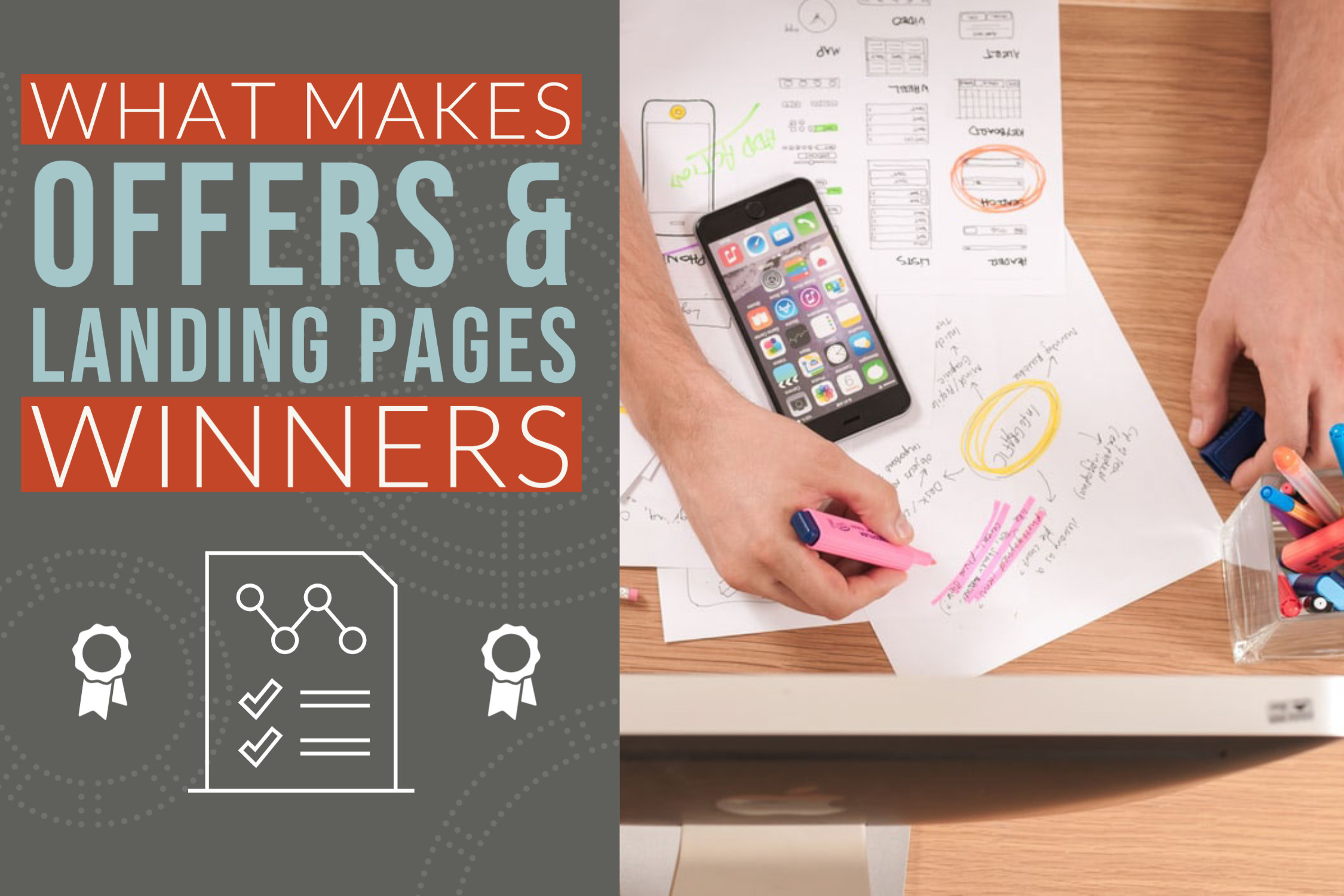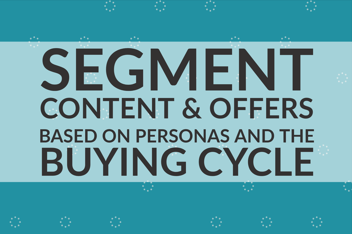An Inside Look At Our Lead Generation Superstars
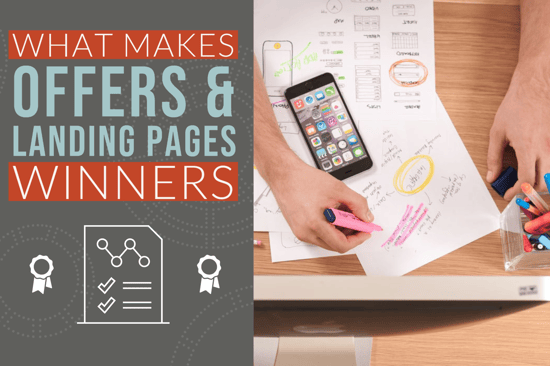
In marketing, as with almost any endeavor, there is theory and there is reality. Just ask any veteran of a given profession who has recently had a conversation with a freshly-graduated newcomer full of ideas about “how it works” that come from classes and books.
Those classes and books are great, and should be very close to what happens on the ground and in the trenches, but real-world results can also be much different. Which is why it pays to take time to review your actual results and see how they compare to what you would have expected based on best practices and industry averages.
That review is something I did recently with our own inbound marketing offers and landing pages. I wanted to see which offers and calls-to-action (CTAs) generated the most traffic, which landing pages had the highest conversion rates, and where there are opportunities to improve promotion for pages that nearly always convert, but may not be getting as much traffic. In other words: what makes a winning inbound marketing offer and landing page work?
Before we dig into our JONES performance, consider these industry benchmarks: According to HubSpot, landing pages generate a 5-15 percent conversion rate, on average. And, a recent analysis by unbounce reveals a 12 percent conversion rate is “pretty good for lead generation landing pages. And by ‘pretty good,’ we mean you'll be better than about 90% of your competitors.”
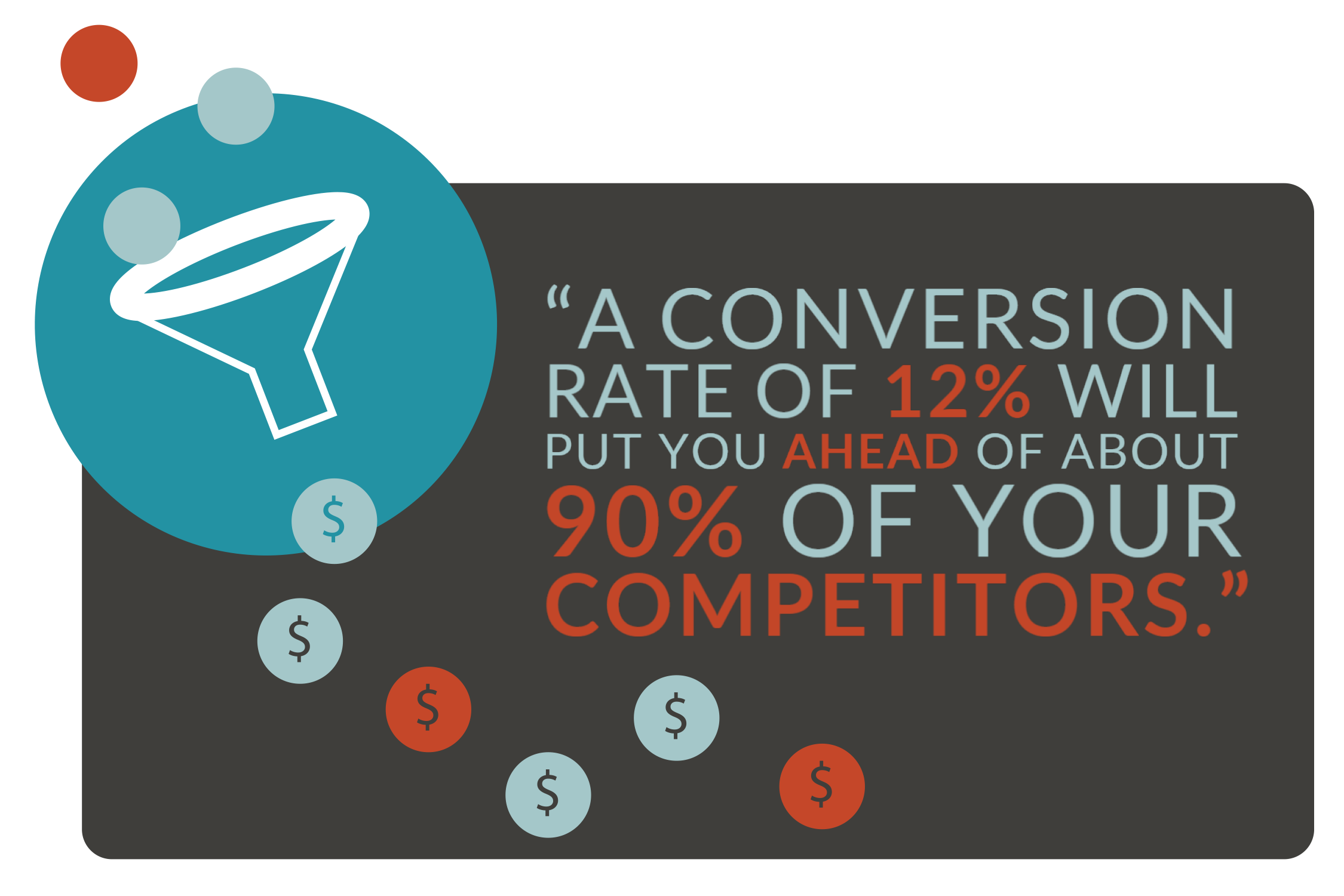
If we use that 12 percent figure as a target, our top dozen landing pages do a great job of converting visitors (meaning that viewers submit a form to download the offer). Just a month into 2020, our top 12 landing pages in terms of overall traffic are exceeding that conversion rate. When I look at 2019’s year-end figures, of the 20 most-visited landing pages on our website, 15 have conversion rates above that benchmark — most of those are well above that mark.
So, let’s look at specifics, and talk a little about what the real-world results say about our offers, landing pages, and our readers’ needs.
10 Of The Most-Visited Landing Pages (aka Marketing Resource Offers) On The JONES Site:
Almost all of the landing pages on our website are for downloadable resources. Only two landing pages are for offers other than a free download: a subscription to this blog and a request for a consultation. So, the amount of traffic coming to each landing page is an indication of reader/visitor interest in a downloadable offer. Here are 10 of the downloadable offers and landing pages most visited in 2019:
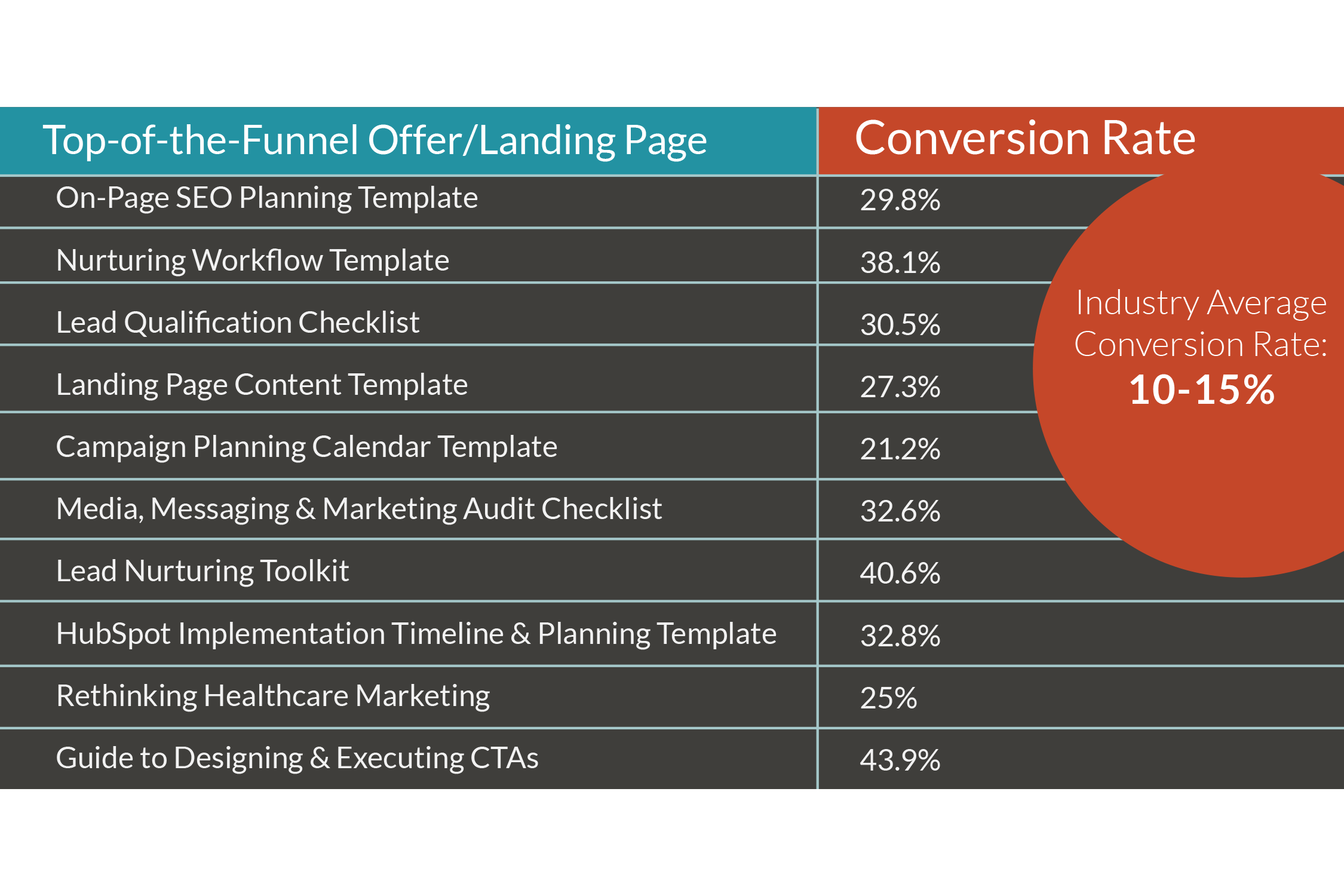
Not only are these the landing pages that report the most traffic on our site, they generate the most new leads or contacts out of nearly 100 downloadable marketing resources. (Want to check them out for yourself? Visit our Inbound Marketing Learning Library for the full list of resources, or find links to these specific offers at the end of this post.)
What makes them so popular?
I think much of their appeal to our visitors goes back to one of our rules for creating great content: Make it useful.
Of these 10 offers, eight are templates and checklists that marketers can use to streamline planning and content creation. The last two are ebooks with useful information, including one — Rethinking Healthcare Marketing —which uses survey data and research you won’t find anywhere else. And all of these downloadable resources get the majority of their traffic from organic search.
Other things these landing pages have in common are features that tend to improve landing page conversion rates overall:
-
An image.
-
A list of benefits.
-
Progressive forms (so that repeat visitors don’t have to re-enter the same information every time, but the automated platform can still collect additional information from these leads).
Another commonality amongst these high-traffic, high-conversion offers is that they appeal to the segment of our target market at the top or middle of the sales funnel. These are informative, useful pieces — they are not focused on making an immediate sale. They are a perfect way for a new visitor to our website to start to build a connection, without feeling like they are being hounded to sign up as a client right away. They showcase our knowledge and expertise without seeming pushy or talking too much about ourselves.
This is a contrast to the next group of offers/landing pages I am going to review: Those with the highest views-to-submissions (conversion) rates, but much lower traffic overall. What’s up?
The Highest-Converting Marketing Offers On The JONES Website
When I flip the report on our landing pages from those with the highest views to those with the highest conversion rates, I get a different group of offers, but again, all of these offers have something in common.
This time, the offers are almost all content created for the bottom of the sales funnel. These are the pieces of content a lead looks to as they near a decision: problem/solution whitepapers, “solution sheets” where we describe in more detail our methodology and specific strategies, case studies and success stories.
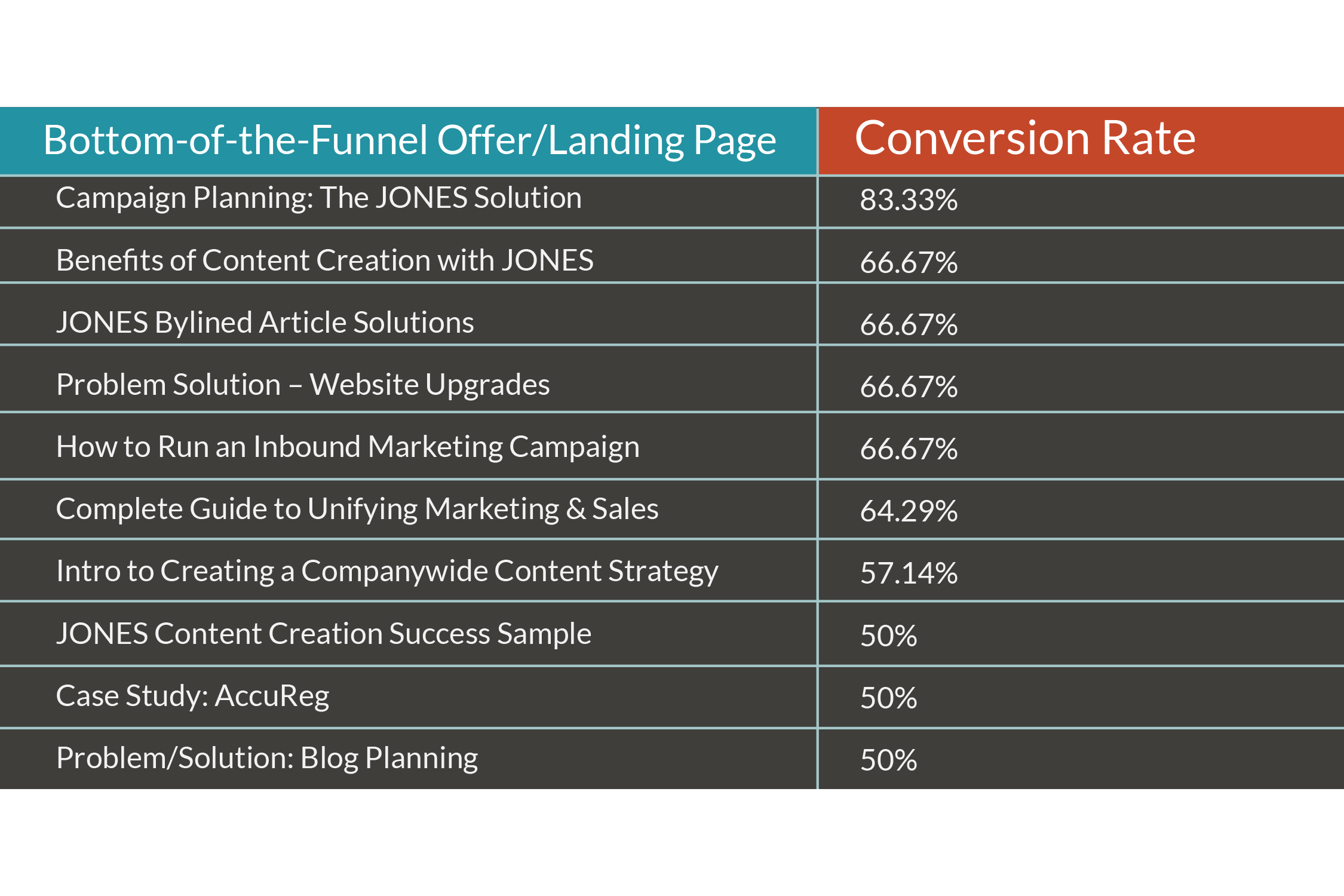
Reviewing this group of offers, another metric jumps out at me. None of the conversions on these landing pages were from brand new contacts, whereas the majority of those who downloaded the high-traffic, top-of-the-funnel materials above were new leads. The leads who convert on this set of offers have visited our site and downloaded content before. They are here because they know what they are looking for.
That tells me that our offers and content are working much the way they are designed to work.
Awareness level content — useful, unique and more information-based than sales-focused — attracts a larger amount of traffic from a wider range of visitors who are just getting to know us. The conversion rate on those offers or landing pages is lower than on more focused content simply because they are being seen by more people, with a wider range of needs. After all, we know that only 1 in 10 leads is really ready to buy or sign a contract when first visiting our site (most likely even fewer in a B2B service industry like ours).
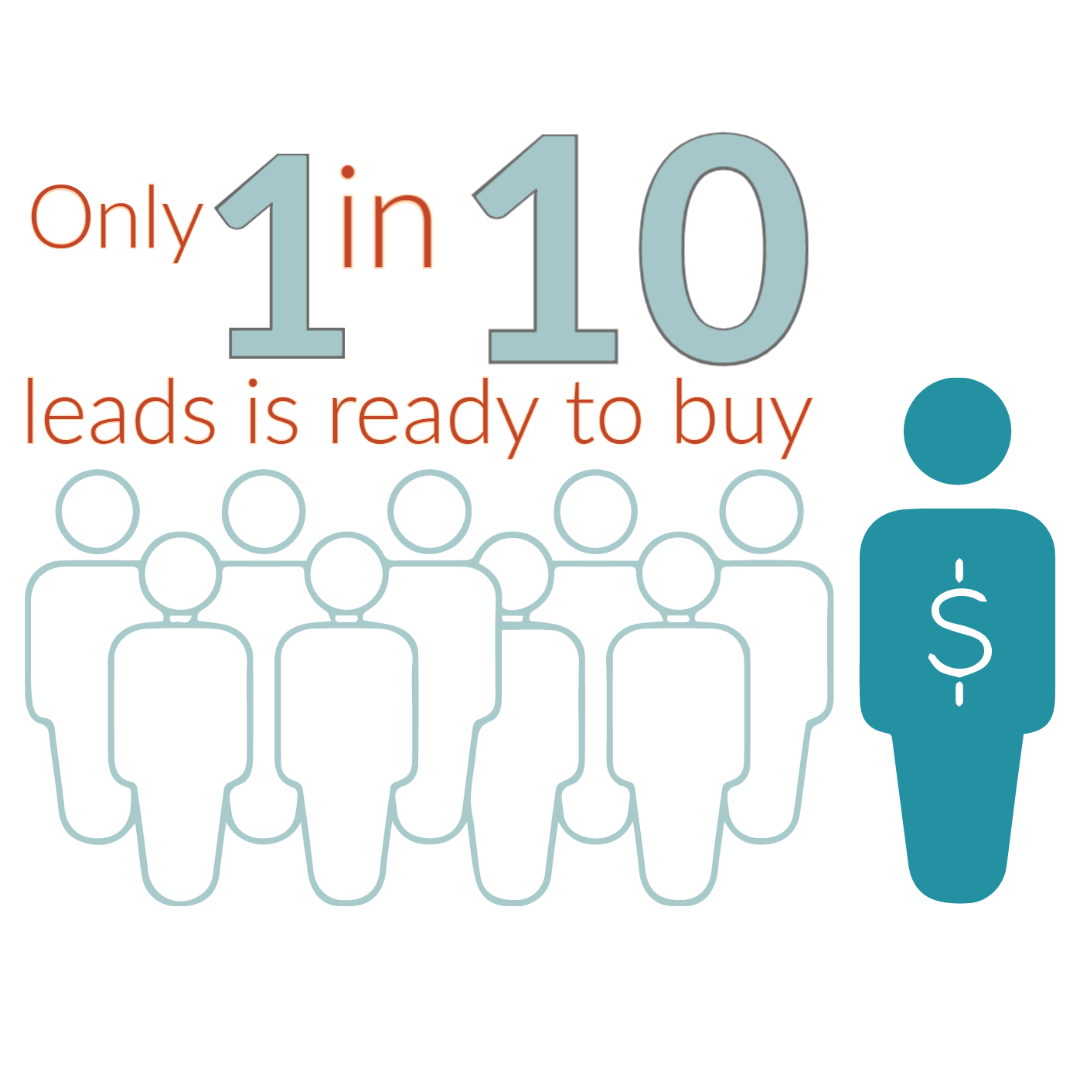
But once a lead has downloaded at least one piece of content, read a few blog posts, and gotten to know more about JONES, when they do visit the landing page for a more solution- and service-focused offer, the chances of them completing the form and converting again on that offer are much higher.
What reviewing these metrics tells me is this:
If the key to awareness content traffic and conversion rates is to be useful, the key to decision content conversion rates is to focus on solutions and success.
It also tells me that in our case, the theories do match up with real-life experiences.
Reviewing these metrics reinforces our commitment to creating full-funnel campaigns, for ourselves and our clients. The results seen in our own inbound marketing efforts are evidence that leads really do want different information at different stages of the sales funnel, and when you provide a spectrum of content to appeal to all stages, you can continue to connect as leads move through the buyers’ journey.
Are you curious about the specific offers that have done well for us (and been useful for marketers like you)?
Check out these links for all of the offers listed above:
If you want to talk about ways to improve your landing page conversion rates, I’d love to chat. Click here to schedule a quick introductory (no obligation) meeting on my calendar.
-1.png?width=1652&height=294&name=Jones(RGB)-1.png)

